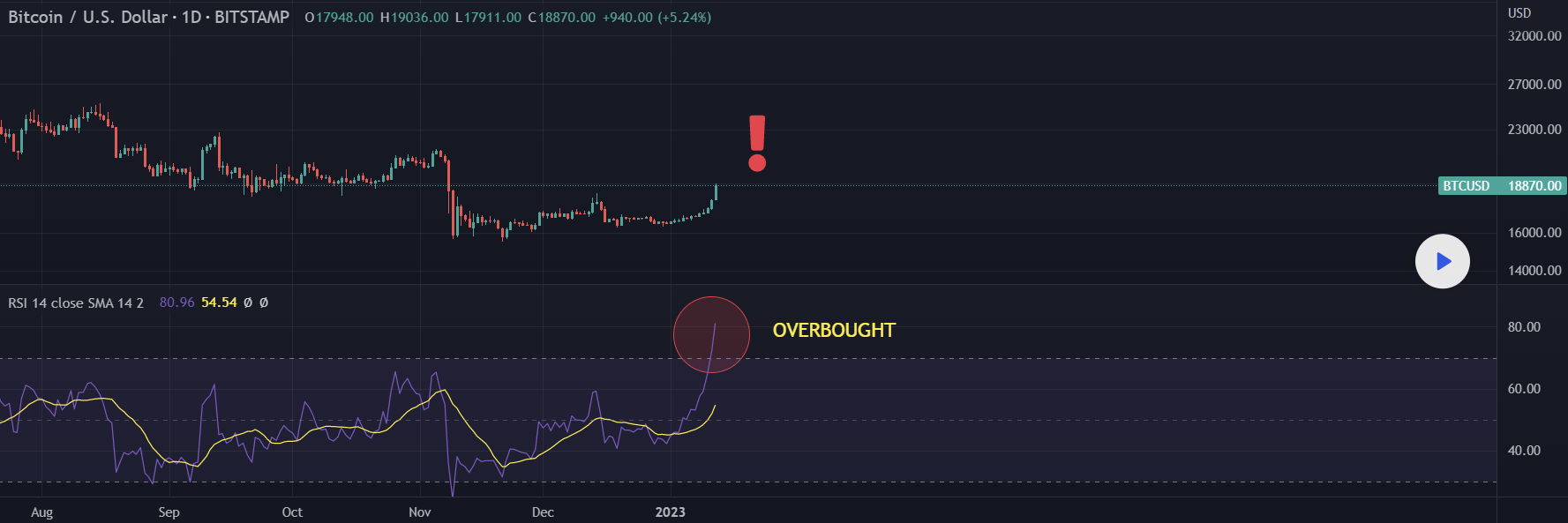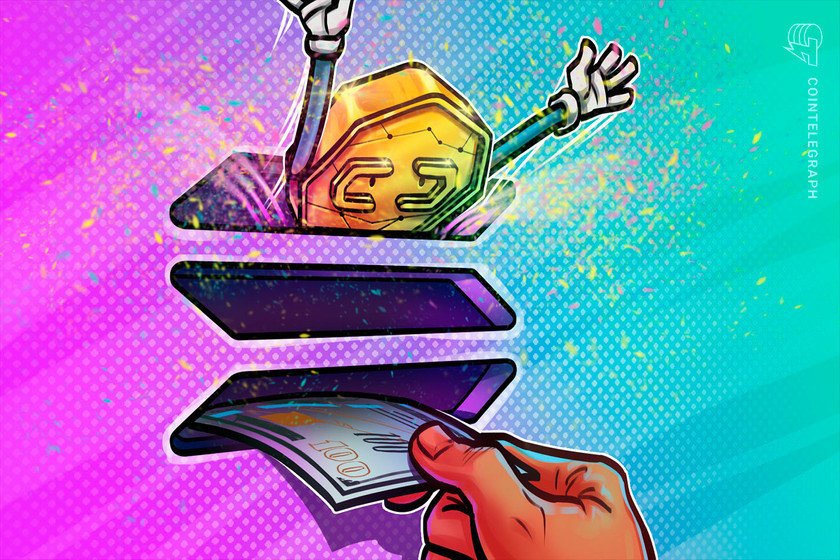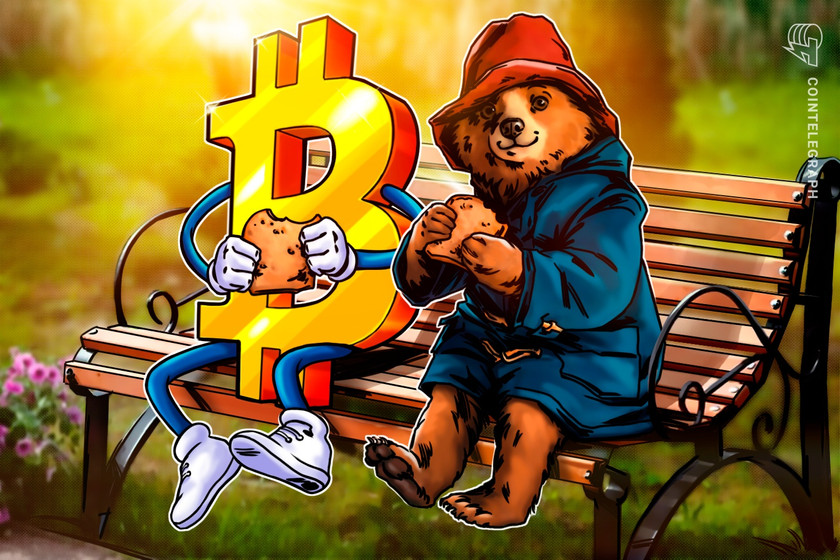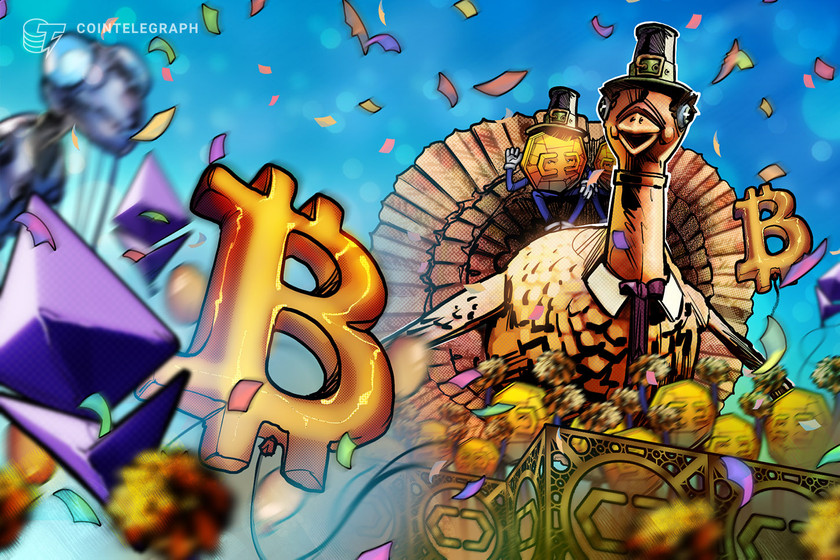Bitcoin price rally over $21K prompts analysts to explore where BTC price might go next


Bitcoin price is steamrolling above the all-important $20,000 level, leading analysts to speculate on where BTC price might go.
After Bitcoin (BTC) hit a yearly high of $21,095 on Jan. 13, where is it headed next?
Bitcoin is currently witnessing an uptick in bullish momentum after the positively perceived Consumer Price Index (CPI) report was followed by a strong rally across the crypto market.
The recent rally in Bitcoin is creating increased volume levels and higher social engagement on whether the price is in a breakout of fakeout mode.
Is the Bitcoin bear market over?
While the market is still technically in a bear market compared to last week, investor sentiment is improving. According to the Fear and Greed Index, a crypto-specific metric that measures sentiment using five weighted sources, investors’ feelings about the market hit a monthly high.


Bitcoin price is now above the psychologically important $21,000 level and many analysts and traders are issuing their thoughts on where BTC price could head next.
Let’s explore a few of these perspectives.
Bitcoin trading volumes remain a concern
Bitcoin price has yet to recover from its pre-FTX levels but reached above $21,095 on Jan. 13 for the first time since Nov. 8, 2022. Despite the strength of the recent rally, some analysts believe BTC price needs to remain above the $21,000 support before the current bullish trend can be sustained.
According to Glassnode analysis:
“A renewed bullish trend that started on January 1st drove bitcoin to the $18.6 – $18.9k level, yet a cross over to $19k is necessary to claim a new trading channel around $19-$21k. Resistance is expected around these levels as bitcoin faces a mid-term downward trend. If the price fails to break over the trend line, we expect a retrace toward the $16-$17k area.”


The lack of trading volume of around $18,000 shows the weakness in the current on-chain and centralized exchange (CEX) activity. The largest volumes and overall activity seem to surround the $16,000 level, suggesting that is a more solid floor than the current price range. With less volume surrounding levels higher than $21,000, Bitcoin’s rally could be capped at $21,095.
Is it just a bear market rally?
Bitcoin is still facing headwinds including massive exchange layoffs in a tightening macro economy, Gemini and Genesis legal issues and the potential establishment of a U.S. House crypto-focused subcommittee.
In addition, Bitcoin’s relative strength index (RSI) is currently showing BTC as overbought. According to RSI analysis, a sharp downtrend may form as the price corrects.


The macro markets are also at major resistance levels. The United States Dollar index (DXY) is at key support which means risk assets like Bitcoin may start to see a sell-off if the index recovers. Bitcoin remains correlated to equities and the SPX mini futures index is also showing signs of a pullback.
TraderSZ explains below:
$BTC – huge resistance here…dxy at key support…ES looking like it could pullback abit, eth at macro mid range…been up only all week so could get some profit taking/pullback….arrow would be my trigger IF it follows plan pic.twitter.com/6JziAmBywH
— TraderSZ (@trader1sz) January 12, 2023
With Bitcoin investors taking profits as suggested by TraderSZ, it may be tough for BTC to reach higher levels.
Historical analysis points to a new Bitcoin bottom
Bitcoin is currently below its 200-week moving average and according to independent market analyst Rekt Capital, Bitcoin price may have already hit its macro bottom according to historical data. Historically the “Death Cross” level shows a $23,500 bottom.
Several months later and #BTC has dropped into the Macro Bottoming Area as dictated by historical $BTC Death Cross price tendencies
According to these principles, the general Bottoming Out area begins from $23500 (green)#Crypto #Bitcoin https://t.co/85DjLHoZnD pic.twitter.com/iTbCV1CxG3
— Rekt Capital (@rektcapital) January 13, 2023
While traders and technical analysts are not known for accurately predicting how long a bull or bear market might last, independent market analyst HornHairs cited historical data from 2015 to estimate how long it will take for Bitcoin to hit a new all-time high.
The bull market from 2015 to 2017 lasted for 1064 days, matching with the 2018 to 2021 bull market which lasted the same number of days. If traders match the bear market that followed between 2017 to 2018 and 2021 to the current market, it would take 1,001 days until Bitcoin reaches a new all-time high.
$BTC #Bitcoin
2015-2017 bull market: 1064 days
2017-2018 bear market: 364 days2018-2021 bull market: 1064 days
2021-*current* market low: 364 daysDays left until the top if we just carbon copy the cycle timeframe again: 1001 days pic.twitter.com/KoNZxJRuy5
— HornHairs (@CryptoHornHairs) January 12, 2023
Despite the current conditions and the strength of the current price breakout, Bitcoin has proven many technical analysts wrong in the past. Risk-averse traders might consider keeping an eye out for increased trading volume at higher prices as an indicator of whether Bitcoin is finally back in a bull market.
The views, thoughts and opinions expressed here are the authors’ alone and do not necessarily reflect or represent the views and opinions of Cointelegraph.





























